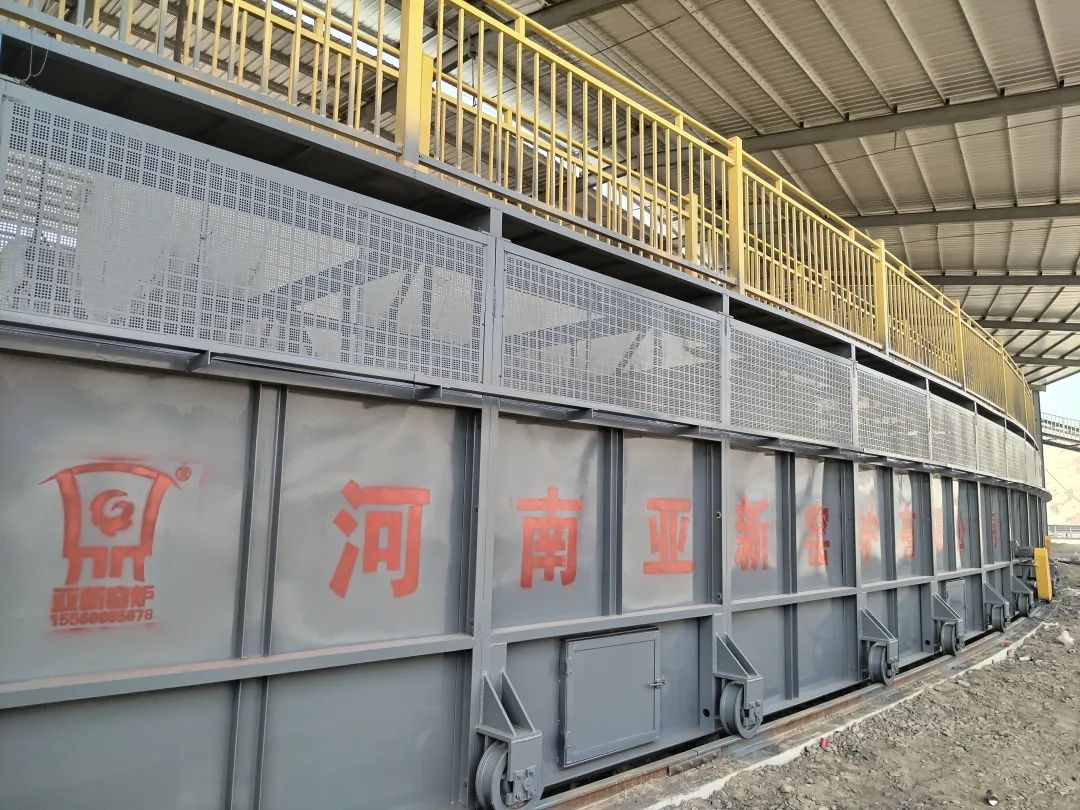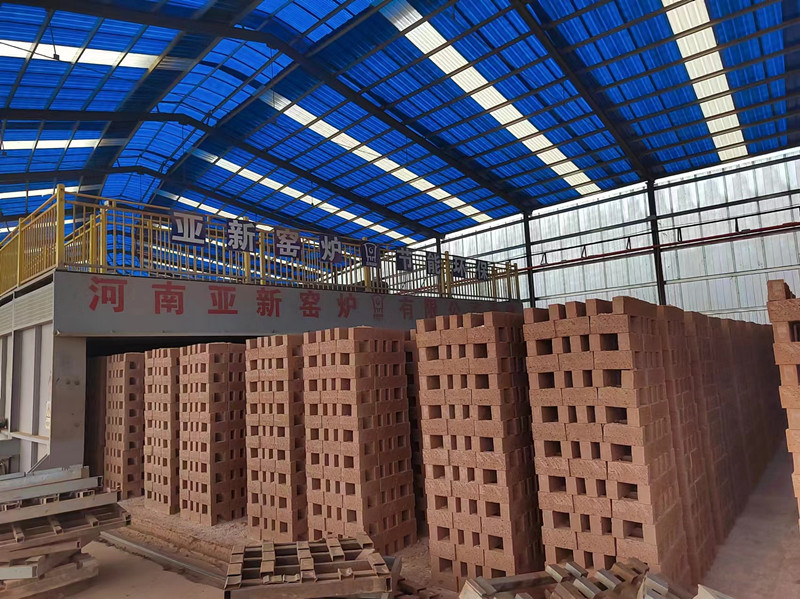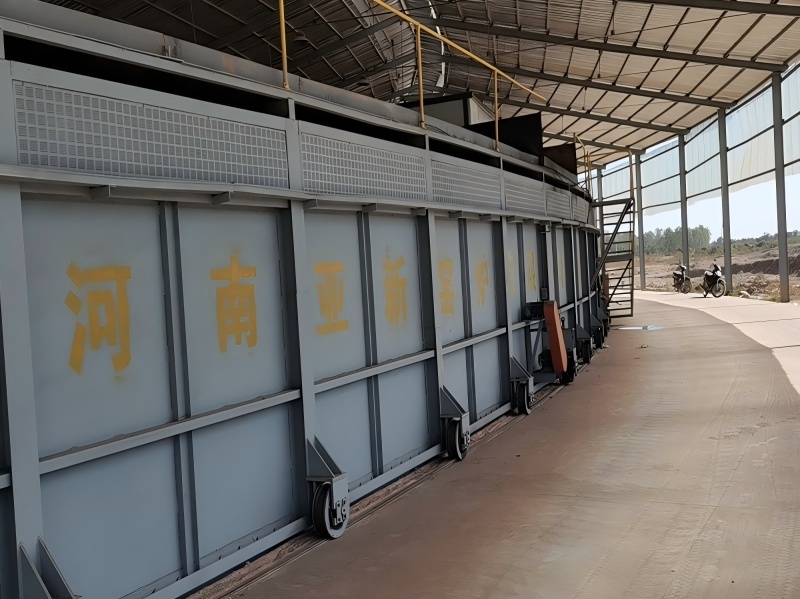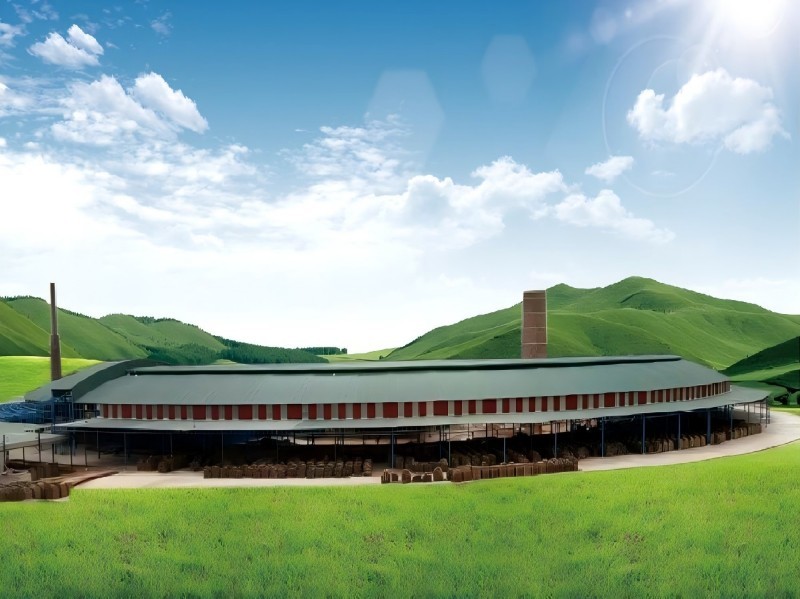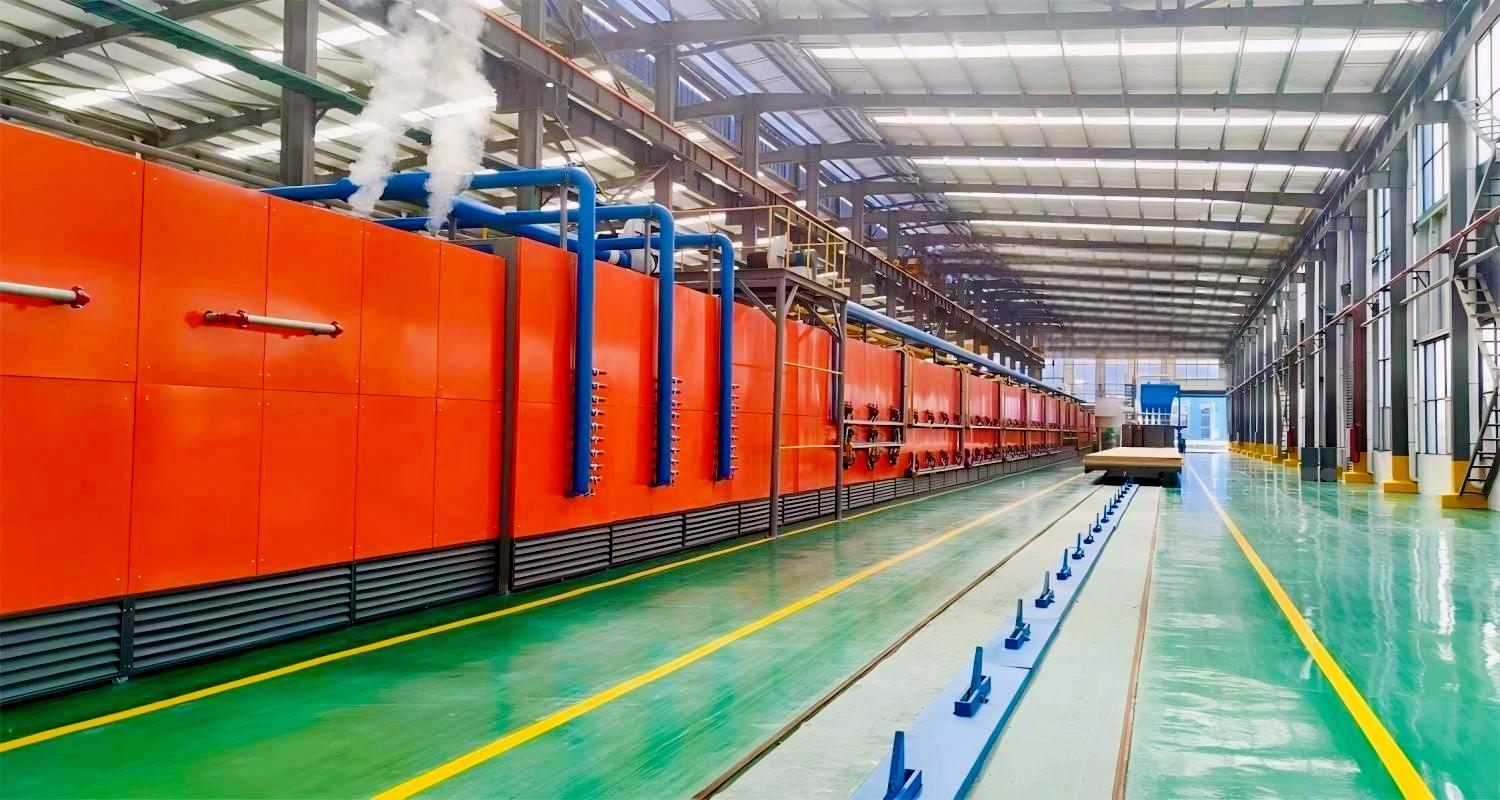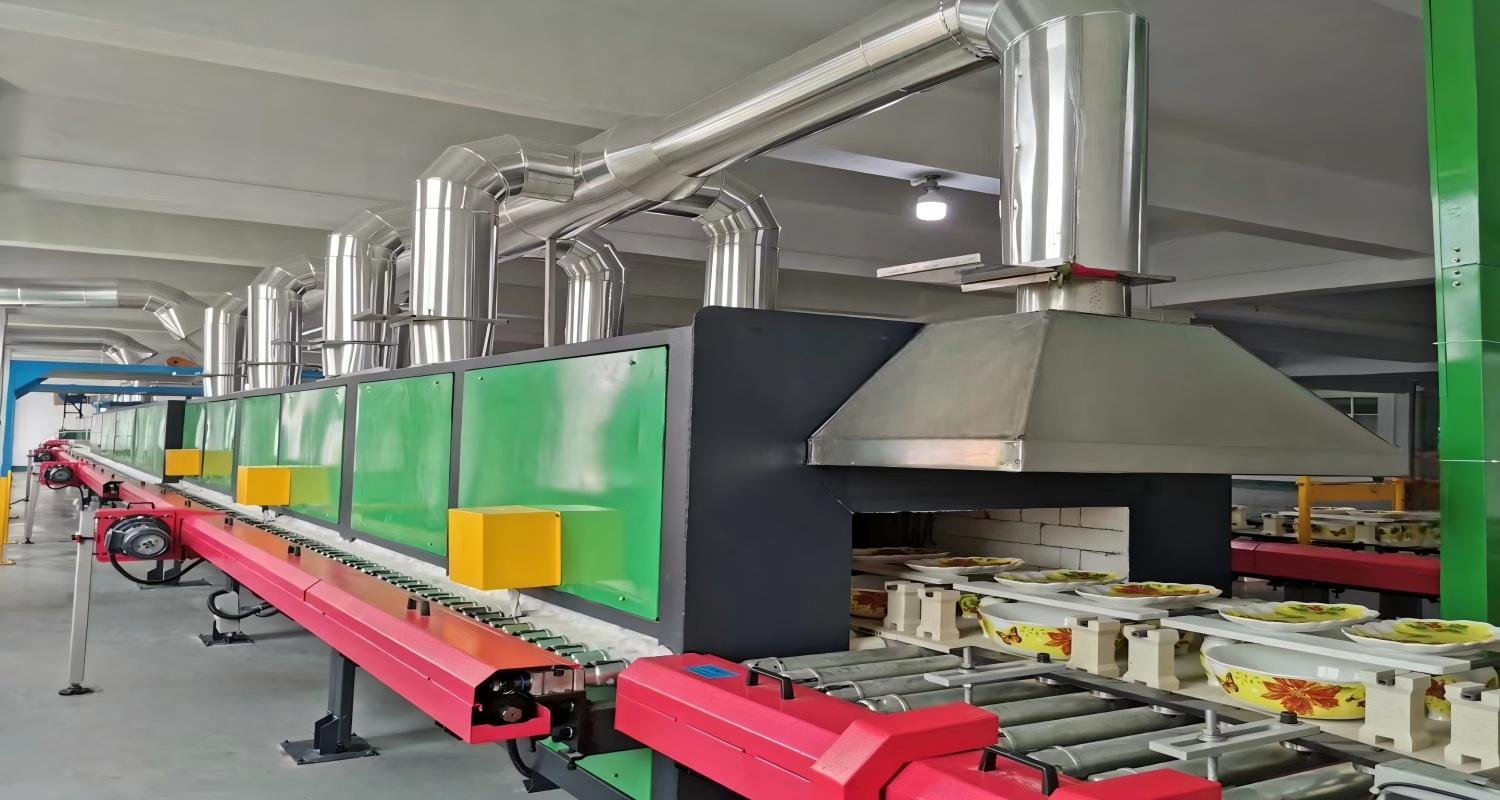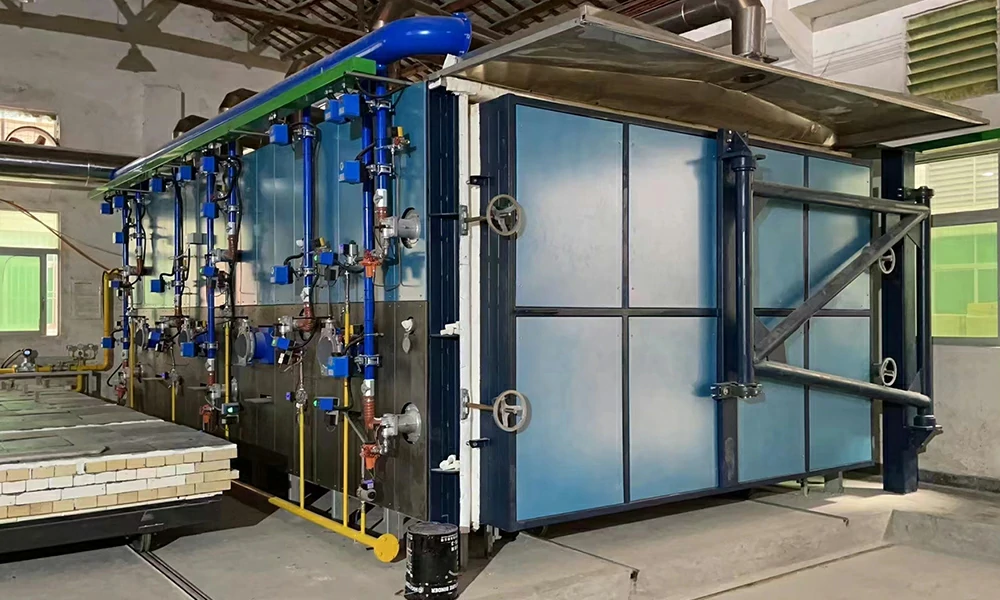Henan Yaxin Kiln Co., Ltd.

Pusher kiln
- Commodity name: Pusher kiln
Description
Brief introduction:
The pusher kiln, also known as the push plate furnace or push plate tunnel kiln, is named as the push plate kiln because the heat-resistant plate for placing the sagger is pushed by a hydraulic press. It is a high-yield and low-energy kiln type with an energy saving rate of 8-15%. Its core working principle is to push the material to move continuously in the kiln body through the push plate, and at the same time use the heating system to sinter and calcine the material. It has the characteristics of high efficiency, energy saving, high degree of automation, etc., and plays an important role in many industrial fields.
Working principle:
The push plate kiln looks like a long tunnel. The whole kiln is divided into a preheating zone (entry zone), a firing zone and a cooling zone (exit zone). The firing zone of the push plate kiln is located on both sides of the middle of the kiln body. The preheating zone uses the radiation heat transfer of the firing zone to gradually preheat the blanks loaded on the push plate. The cooling process is that the push plate moves outward, and the products on the push plate are in contact with the external temperature and gradually cool down naturally.
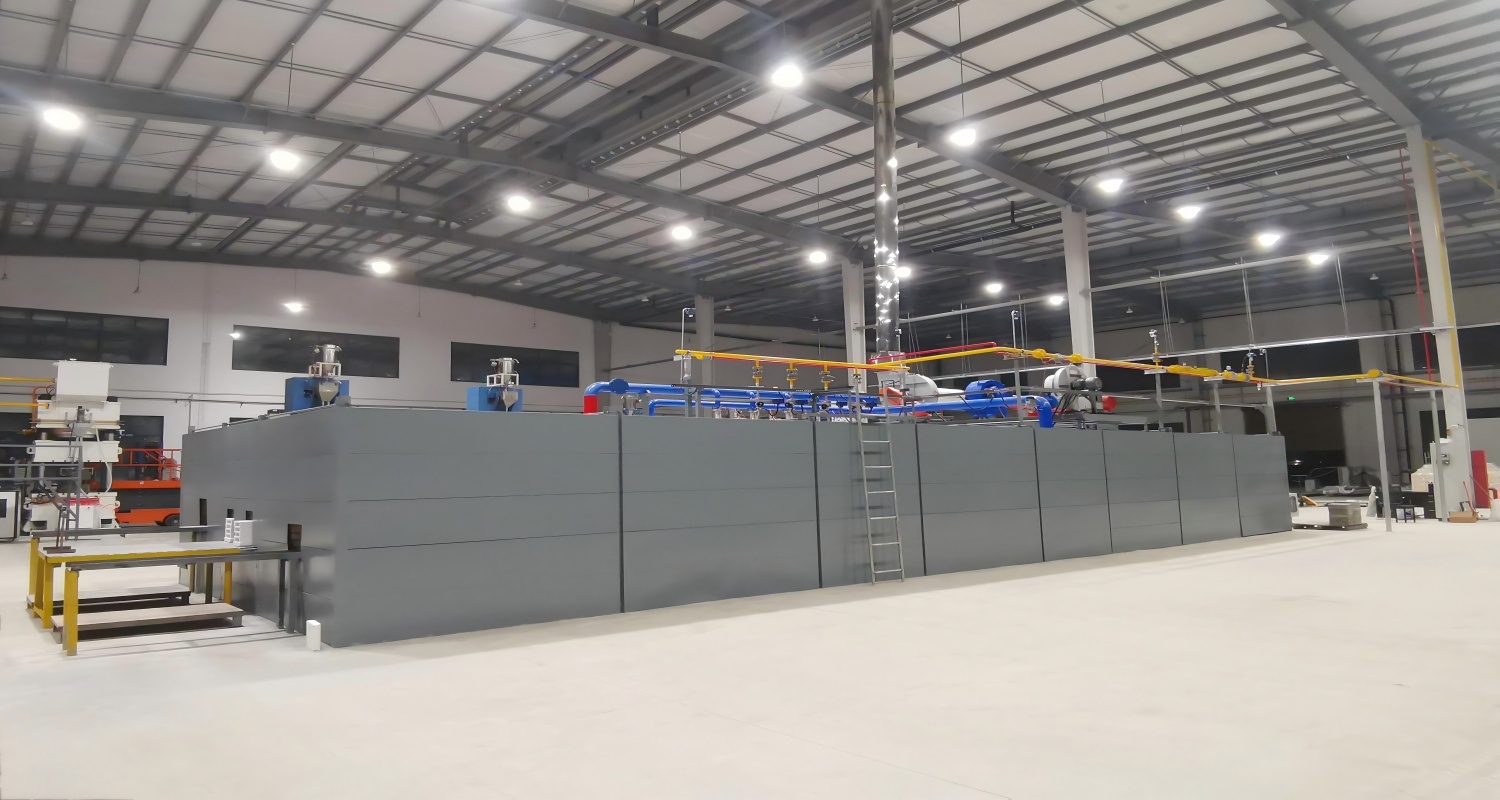
1. High efficiency and energy saving
The push plate kiln adopts a continuous production design, with precise control of the temperature zone inside the kiln and high thermal energy utilization rate. Compared with intermittent kilns, it can save 20%-30% energy, greatly reducing production costs.
2. Stable and uniform
The push plate mechanical transmission realizes the uniform advance of the blank, the temperature field in the kiln is evenly distributed, and the product is heated uniformly, avoiding the local over-burning or raw burning problems of traditional kilns, and significantly improving the yield rate.
3. Flexible adaptation
The kiln structure can be customized (such as length, temperature zone) to adapt to products of different sizes and firing curves, especially suitable for small batch and multi-variety production needs such as electronic ceramics and magnetic materials.
4. High degree of automation
Integrated automatic feeding, temperature control and discharging systems reduce manual intervention, the production process is coherent and stable, suitable for industrial large-scale continuous operations, and significantly improves production efficiency.
Application





Key words:
Pusher kiln
Case
Get A Quote
Want an immediate response?
You can consult online or write an email, We deal with your needs immediately

Company Profile
Introduction to Henan Yaxin Kiln Co., Ltd.
Henan Yaxin Kiln Co., Ltd. is a highly professional and innovative enterprise in the field of industrial furnace design, manufacturing and service. The company focuses on providing customers with high-efficiency and environmentally friendly industrial furnace solutions, and its business scope covers the whole process of services from project consulting, engineering design, equipment manufacturing to installation and commissioning and after-sales support.
Company establishment
Patent certificate
Covering national regions
Installation engineer
Advantages
Talent and Professional Advantages
Our company has a team of experienced engineers and technologists who have profound knowledge and practical experience in thermal technology, automation control and energy saving and environmental protection. Through continuous technology development and innovation, the company has obtained a number of national patents and successfully implemented a series of landmark projects, creating significant economic benefits and social value for customers. Moreover, the company owns a number of patented technologies, especially in waste heat recovery, low-NOx combustion, clean energy application and other aspects of the industry leader, to help customers realize green production.
Core Business and Technical Advantages
Energy-saving and environmentally friendly kilns:
such as mobile kilns, roller kilns, tunnel kilns, shuttle kilns, etc., which are widely used in the production of bricks and tiles, ceramics, and refractory materials;
Intelligent control system:
integrated automated temperature control, energy consumption monitoring and remote operation and maintenance technologies to enhance the kiln's operational efficiency.
Market Layout and Service System
Yaxin's kiln business covers the whole country, and actively expand the overseas market, products are exported to Southeast Asia, Africa, the Middle East and other regions. The company adheres to the concept of “customer first” and provides full life cycle services from program design, equipment customization to installation and commissioning, after-sales maintenance, and has successfully provided kiln system integration services for many large enterprises and industrial parks.
Qualification and Social Responsibility
As a benchmark enterprise in furnace industry of Henan Province, Yaxin Furnace has obtained ISO 9001 quality management system certification, high-tech enterprise certification and other qualifications, and participated in the development of a number of industry standards. The company has always been practicing the concept of sustainable development, promoting kiln technology to low-carbon, intelligent upgrading, and providing technical support for the transformation of traditional manufacturing industry.
Related Products
FAQ

What is the maximum operating temperature of a pusher kiln?


What is the level of automation in a pusher kiln?


How to select the material of pusher plates for pusher kilns?


What are the key points of daily maintenance for pusher kilns?


What are the main differences between pusher kilns and roller kilns?



